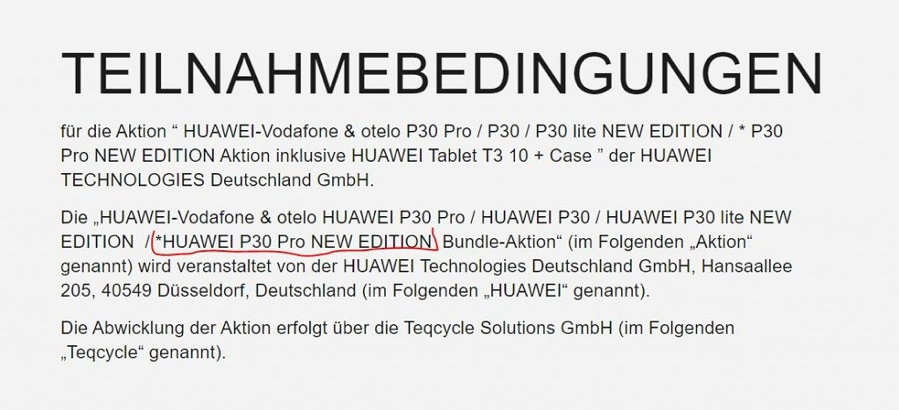Vertical Divider
Huawei Looking to Get Around US Trade Restrictions
May 10, 2020
U.S.-based companies are restricted from exporting to Huawei, so one of the immediate side effects of this trade ban is that many new Huawei and Honor smartphones cannot ship with Google Mobile Services (GMS) pre-installed, which includes the Google Play Store and Google Play Services. Both the Huawei Mate 30 series and the Huawei P40 series, Huawei’s late 2019 and early 2020 flagship devices, don’t ship with Google apps as a result. However, Huawei has found some clever ways around this trade ban, one of which involves tweaking an existing, already-certified model and then re-releasing it to the market. That’s exactly what appears to be happening now as the company seems to be preparing to launch the Huawei P30 Pro New Edition. The evidence for this “New Edition” model comes from Huawei’s consumer page in Germany (via Digital Trends), where a Huawei P30 Pro “New Edition” is mentioned in a promotion. Huawei previously launched a P30 Lite New Edition with Google Mobile Services onboard and that phone was pretty much just a rehashed Huawei P30 Lite. This P30 Pro New Edition should have few differences from the current P30 Pro. Those differences are not known, since the only piece of evidence pointing to its existence is this text.
May 10, 2020
U.S.-based companies are restricted from exporting to Huawei, so one of the immediate side effects of this trade ban is that many new Huawei and Honor smartphones cannot ship with Google Mobile Services (GMS) pre-installed, which includes the Google Play Store and Google Play Services. Both the Huawei Mate 30 series and the Huawei P40 series, Huawei’s late 2019 and early 2020 flagship devices, don’t ship with Google apps as a result. However, Huawei has found some clever ways around this trade ban, one of which involves tweaking an existing, already-certified model and then re-releasing it to the market. That’s exactly what appears to be happening now as the company seems to be preparing to launch the Huawei P30 Pro New Edition. The evidence for this “New Edition” model comes from Huawei’s consumer page in Germany (via Digital Trends), where a Huawei P30 Pro “New Edition” is mentioned in a promotion. Huawei previously launched a P30 Lite New Edition with Google Mobile Services onboard and that phone was pretty much just a rehashed Huawei P30 Lite. This P30 Pro New Edition should have few differences from the current P30 Pro. Those differences are not known, since the only piece of evidence pointing to its existence is this text.
Figure 1. Huawei Consumer Page in Germany
Source: Digital Trend
Although Huawei can’t get GMS certification for new phone models, the certifications are still valid for existing models. Thus, so long as the changes that Huawei makes to an existing model allow it to run the exact same software release that Google already certified, then Huawei can re-release and rebrand their existing phones as many times as they like. This is actually pretty flexible for them, too. So long as they don’t try to ship a new SoC, they can add a bunch of upgrades such as more RAM, more storage, and different cameras. They can even change up the color and finish of the device to make the design seem fresh. While Huawei can release new phones with HMS and AppGallery in place of Google Play Services and the Google Play Store, it’s advantageous for them to release new phones with Google apps for as long as possible. A big part of the Android experience for international users is based on compatibility with Google apps, as a bunch of apps rely on Google Play Services to work properly and many app developers have yet to bring their apps to Huawei’s app ecosystem. The Huawei P30 Pro New Edition will almost certainly have a HiSilicon Kirin 980 SoC since that’ll allow it to retain the original P30 Pro’s GMS certification. Huawei could include better cameras (which would be a feat considering how the P30 Pro already performs), more RAM, more storage, and maybe even an updated design. They’ll even likely be able to offer Android updates with Google Mobile Services intact as they managed to do with the existing P30 Pro. However, because they can’t upgrade the SoC, they won’t be able to offer new connectivity and camera features that the jump to the Kirin 990 would have provided.
|
Contact Us
|
Barry Young
|


